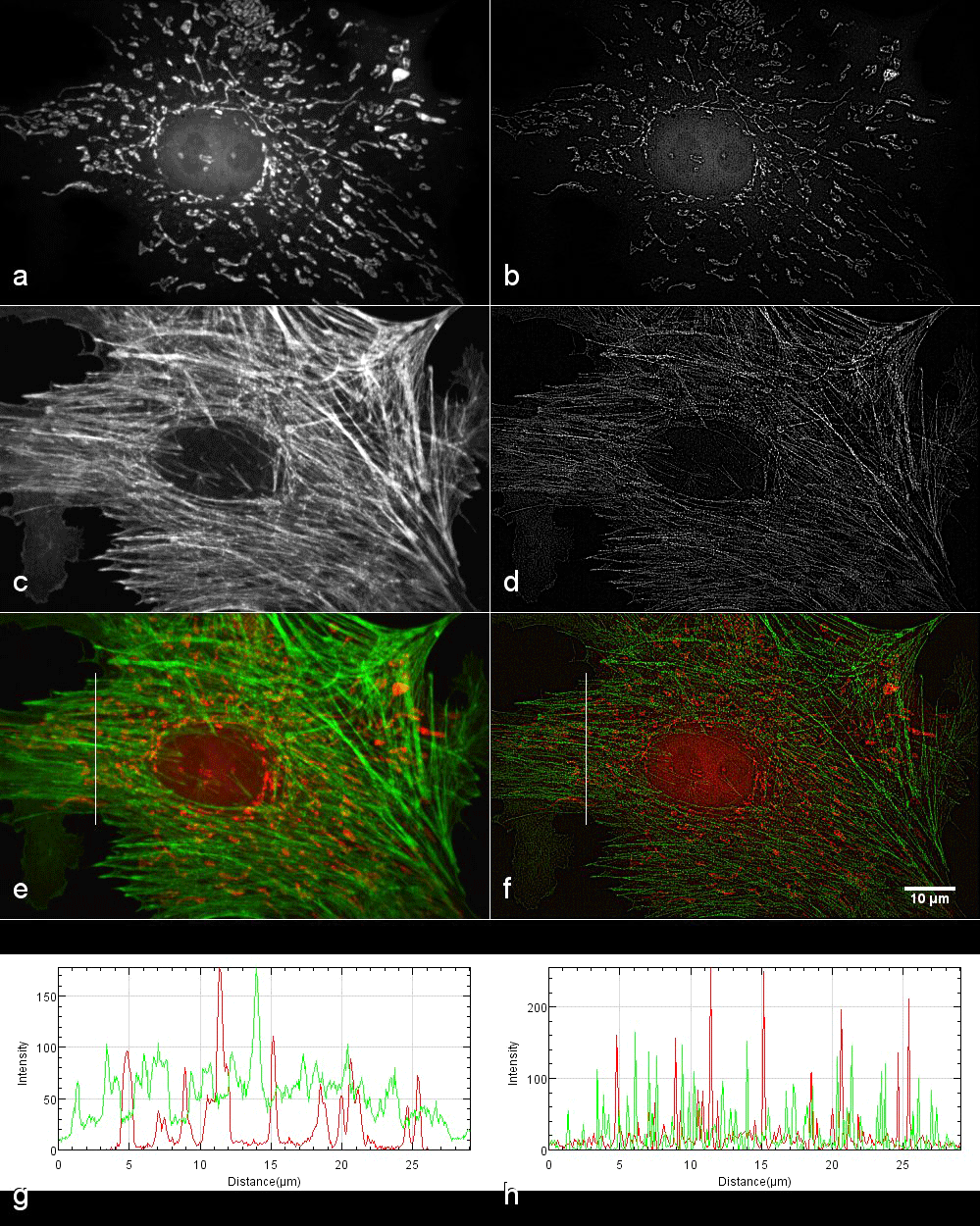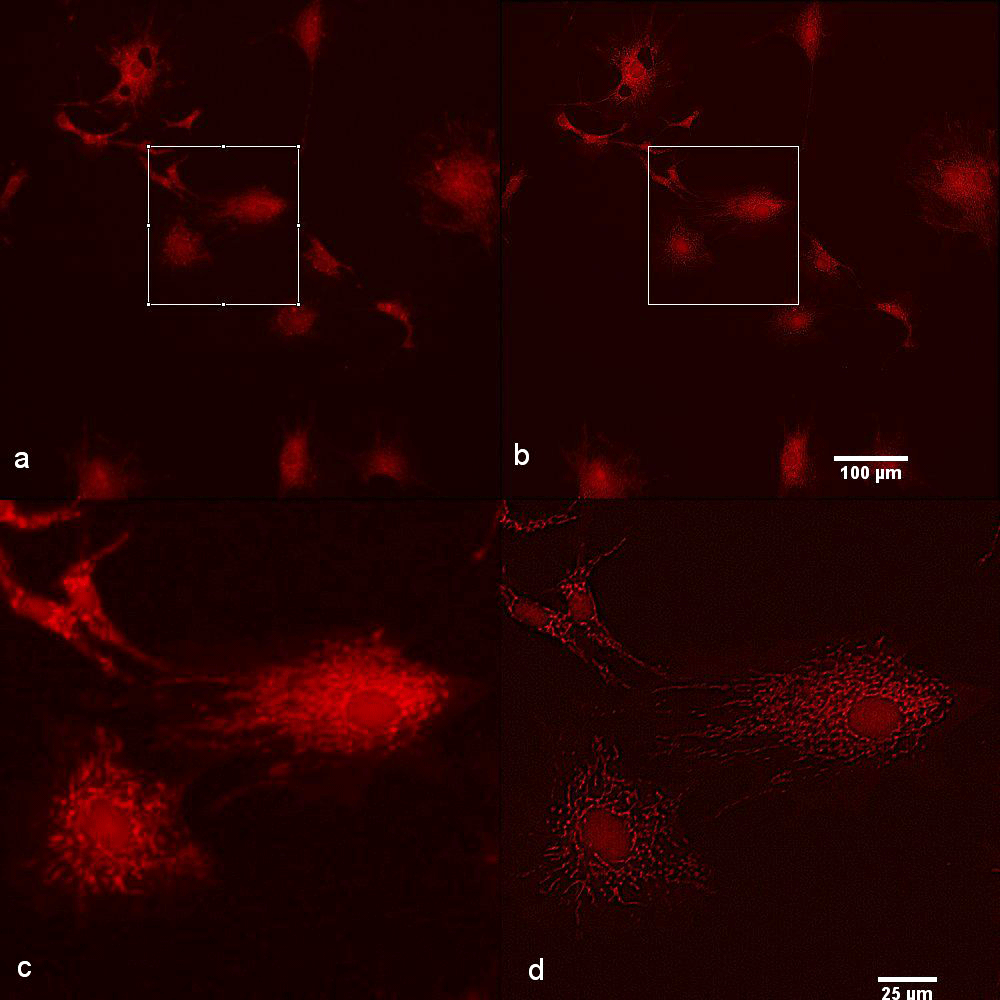Core Biotechnology Services
Super-Resolution Radial Fluctuations
Super-Resolution Radial Fluctuations (SSRF) is a calculation to generate in general 2D super-resolution image from an image sequence which can be acquired on most common fluorescence microscopes, without the necessity for special sample preparation. To calculate the position of the fluorescent molecules you have to install the ImageJ plugins nanoJ and nanoJ-SRRF in Fiji. More recently, an enhanced version called eSRRF has been released.
The nanoJ-SRRF and eSRRF plugins are currently installed on the SRRF analysis computer in MSB 340.
For SRRF to work you require at least 50-100 images from the same sample/slice. I have tested this using the VisiTech microscope and as well as one of the Nikon Ti-E systems with good results. I used 10 to 100 ms per images; so a single data set takes 0.5s - 10s, depending on the signal.

Figure 1; Fifty images per channel were acquired using the VisiTech confocal laser microscope with an exposure time of 100 ms and using the 100x/1.47 NA objective. a: Mitochondria labelled with MitoTracker Red CMXRos; c: Microtubules labelled with Alexa Fluor 488 phalloidin; b and d the SRRF reconstructions for a and c; e and f merged panels with the line indicating the intensity profiles shown in g and h.
SRRF can also be used to further improve data acquired on a confocal laser scanning microscope and it has been on images obtained with a Zeiss Airyscan system, see Wang et al. (2020) Multicomposite super-resolution microscopy: Enhanced Airyscan resolution with radial fluctuation and sample expansions and can obtain a reported resolution of 40 nm.
To improve the resolution using SRRF does not require the highest magnification or NA, as is required for many other superresolution techniques. Below is an image taken on Nikon4 using the 20x/0.45 NA objective.

Figure 2; Fifty images acquired of mitochondria labelled with MitoTracker Red CMXRos using Nikon4 with 20x objective and an exposure time of 100 ms using the Hamamatsu Flash 4 camera. a: original image; b: after SRRF reconstruction; c and d are enlargements from the boxes indicated in a and b.